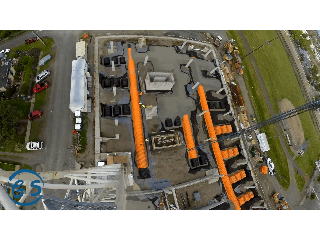
Why did the construction project break up with its spreadsheet? Because it couldn’t handle all the “con-crete” commitments and “steel-y” deadlines!
Listen, construction is a sh*t show, no matter how well it is run. I was once carrying a box out of our job site when a worker unfamiliar to me walked by. I said, “I’m not stealing this; I’m the owner.” He answered, “I don’t care, it’s not mine…” Construction projects can involve various risks that can impact their successful completion. Here are some common construction risks:
- Safety hazards: This one is basic but often overlooked. Crap happens at construction sites, people get hurt, and equipment gets damaged. Even experienced construction dudes frequently forget and overlook basic safety principles. I put it as #1 because if someone dies at your job site, the rest of the points are irrelevant.
- Delays: This one is my favorite. Things always take longer than you think. Construction projects may face delays due to factors like inclement weather, labor shortages, supply chain disruptions, design changes (love this one), or unexpected site conditions (dirt guy’s favorite). Oh, and don’t forget those lovely inspectors… These delays can impact timelines and increase costs. First-time developers frequently fall into this trap.
- Cost overruns: Construction projects are susceptible to cost overruns, often resulting from inaccurate initial estimates, scope changes, unforeseen issues, or delays. Proper budget management and risk assessment are essential. This means DO NOT cut costs on #4!
- Design errors: Incomplete or flawed designs can lead to rework, schedule delays, and additional costs. While mistakes happen all the time, it is especially important not to cut costs here. I’ve done this myself many times. A buck saved during the design process will cost a thousand in the field. Having said that, make sure your design team has actually built similar projects before – interview the contractor. A thorough design review process and effective communication between project stakeholders are vital to mitigate this risk.
- Poor quality: Inadequate workmanship, substandard materials, or lack of quality control can compromise the overall quality of construction. This can lead to safety concerns, premature deterioration, or the need for costly repairs. Watch for that shoddy construction. The lowest bidder is not always the best. In fact, the lowest bidder is usually not the best. They are likely to exclude important scope items or cut corners with materials and quality.
- Contractual disputes: Disputes between parties involved in a construction project, such as contractors, subcontractors, suppliers, and clients, can arise due to issues like payment disagreements, scope changes, or contractual breaches. Document everything!
- Regulatory compliance: Failure to comply with local building codes, permits, or other regulatory requirements can result in fines, penalties, or project delays. Staying updated on regulations and ensuring compliance is essential. Building codes are super complex. Get a couple of specialty consultants, just in case.
It’s important for construction projects to have proactive risk management strategies, including thorough planning, effective communication, regular inspections, and contingency plans, to minimize these risks and enhance project outcomes. This is what my friends at GIS Companies can help with. 😄
Investing in new construction is undoubtedly not for everyone, but I like it. Take a quiz below to see if it’s for you.